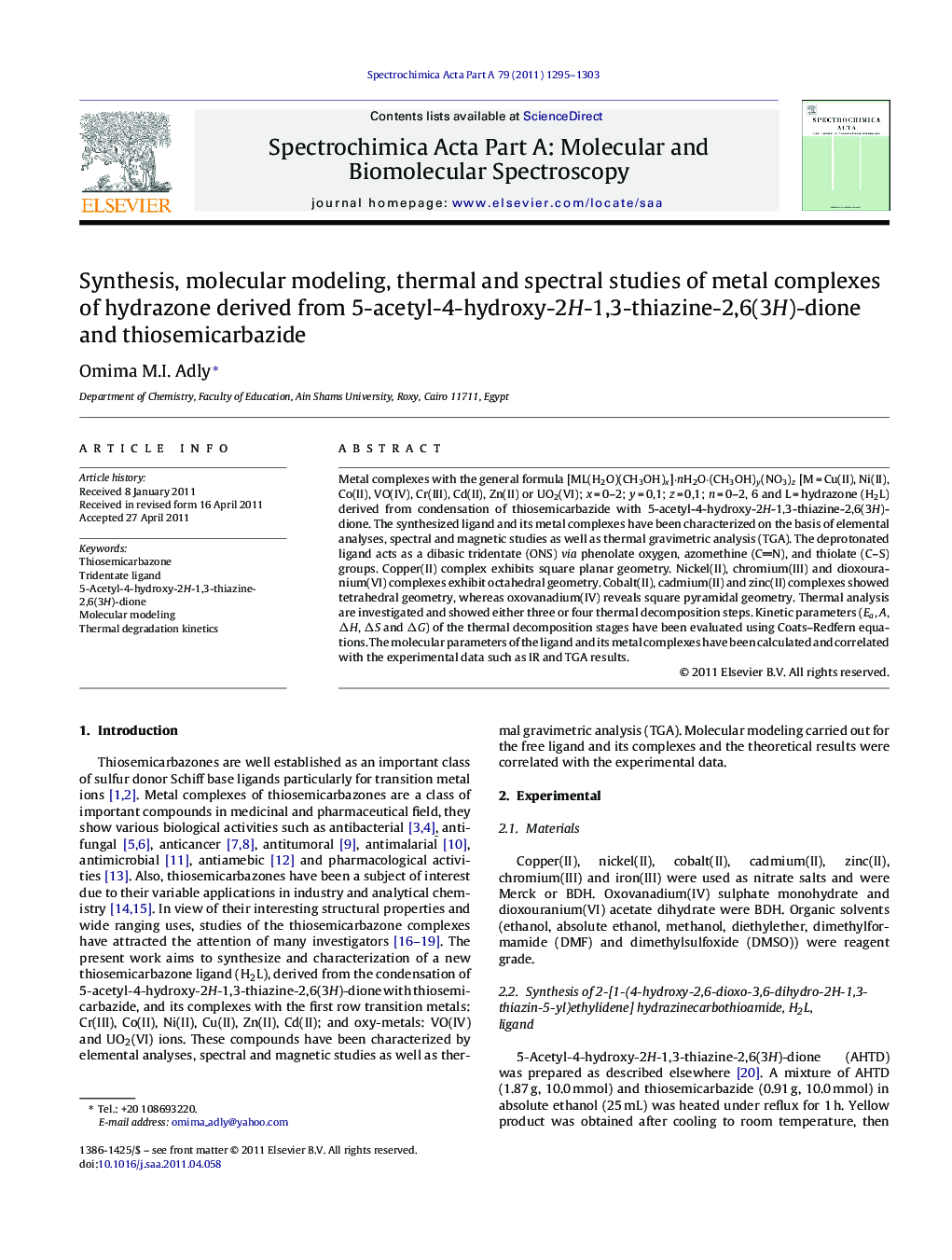| Article ID | Journal | Published Year | Pages | File Type |
|---|---|---|---|---|
| 1236522 | Spectrochimica Acta Part A: Molecular and Biomolecular Spectroscopy | 2011 | 9 Pages |
Metal complexes with the general formula [ML(H2O)(CH3OH)x]·nH2O·(CH3OH)y(NO3)z [M = Cu(II), Ni(II), Co(II), VO(IV), Cr(III), Cd(II), Zn(II) or UO2(VI); x = 0–2; y = 0,1; z = 0,1; n = 0–2, 6 and L = hydrazone (H2L) derived from condensation of thiosemicarbazide with 5-acetyl-4-hydroxy-2H-1,3-thiazine-2,6(3H)-dione. The synthesized ligand and its metal complexes have been characterized on the basis of elemental analyses, spectral and magnetic studies as well as thermal gravimetric analysis (TGA). The deprotonated ligand acts as a dibasic tridentate (ONS) via phenolate oxygen, azomethine (CN), and thiolate (C–S) groups. Copper(II) complex exhibits square planar geometry. Nickel(II), chromium(III) and dioxouranium(VI) complexes exhibit octahedral geometry. Cobalt(II), cadmium(II) and zinc(II) complexes showed tetrahedral geometry, whereas oxovanadium(IV) reveals square pyramidal geometry. Thermal analysis are investigated and showed either three or four thermal decomposition steps. Kinetic parameters (Ea, A, ΔH, ΔS and ΔG) of the thermal decomposition stages have been evaluated using Coats–Redfern equations. The molecular parameters of the ligand and its metal complexes have been calculated and correlated with the experimental data such as IR and TGA results.
Graphical abstractFigure optionsDownload full-size imageDownload as PowerPoint slideHighlights► Novel thiosemicarbazone (H2L) ligand was prepared.► General formula of the synthesized complexes is [ML(H2O)(CH3OH)x]·nH2O·(CH3OH)y(NO3)z. ► Kinetic parameters (Ea, A, ΔH, ΔS and ΔG) have been calculated. ► Molecular modeling of the free ligand and its complexes has been calculated.
